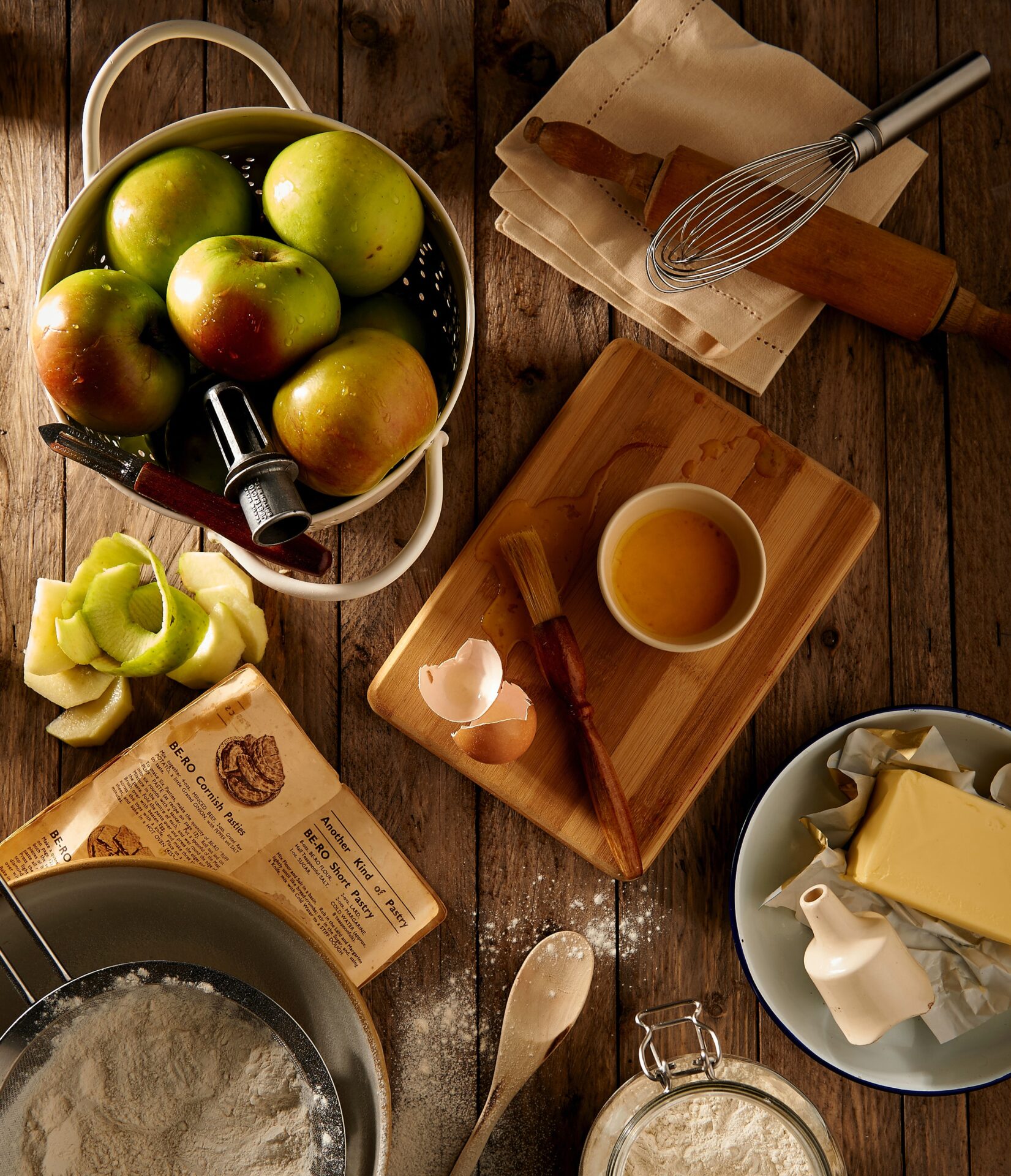Thirty-six gallons a year. That’s how much hard apple cider the average adult drank during the American Colonial era. Children drank theirs watered down in a beverage called ciderkin. Shortly after explorers planted their stake in the ground in the New World, English and French colonists planted apple trees. Within decades, thousands of different apple varieties flourished in the colonies. Each variety was carefully chosen for its role on the farm, on the table, and in the kitchen.
A few apple cultivars were eaten by people or livestock, but most apples were grown solely to create items that kept well or were critical to food preservation, namely fermented cider, distilled apple brandy, and cider vinegar. Freshly pressed soft cider keeps only a few days, but alcohol is a preservative. Fermentation was an easy way to turn an apple crop into something that would keep all winter. Most importantly, it was something to drink that was safer than water. Hard cider reigned as the alcoholic beverage of choice until the early 1900s.
A Few Bad Apples

American hard cider nearly disappeared shortly thereafter. The first salvo came when demand decreased as beer-drinking immigrants from Germany and Eastern Europe joined the population.
Farmers and settlers abandoned family orchards when they moved westward to land where barley and wheat grew more easily, further bolstering beer over cider production. More orchards succumbed during the brutal winter of 1918. Then came the devastating blow from Prohibition, which hit cider particularly hard. Annual production of soft cider was limited to 200 gallons per orchard. And when it came to hard cider, not only did teetotaling zealots dismantle the ciderworks, they chopped down and burned the remaining cider orchards.
Hard cider apples are different from eating apples: they contain enough sugar to encourage fermentation but also high levels of acid and tannins, which make the fruit too bitter and sharp for eating—resulting in what most of us would call a quick-spitter if we dared to take a bite. American cider has never fully recovered from the catastrophic loss of cider apples.
The Hard Cider Comeback

Photo by Kate Medley
However, in the last decade or so we’ve seen a reawakening in the world of craft cider, and we’re making progress. Americans are rediscovering their taste for great soft and hard cider. Craft cider making has piggybacked on both the microbrewery and locavore food movement. Cider-curious consumers, often young and affluent, are willing to spend time and money in search of interesting local products and flavors. American hard cider production has exploded in the past decade alone, with local and regional sales increasing an average of fifteen percent, year by year.
As both cause and effect of the cider boom, a few orchards are resurrecting heirloom cider apples. Although about one-third of cider makers manage their own orchards, all cider makers await the additional fruit with open arms.
But, Like, What is It?
Broadly speaking, cider is either soft or hard. The differences between apple juice and soft apple cider aren’t always clear. Many people define cider as freshly pressed raw apple juice that remains unfiltered and possibly unpasteurized. Naturally occurring yeasts in this type of cider can cause fermentation, which creates hard cider.

Like wine, making cider requires both terroir and technique. Fruit is planted, tended, harvested, crushed, crafted, and sold. There are many styles of cider, ranging from sweet to bone dry to bitter.
Imbibers can find both high- and low-alcohol hard ciders. There is draught, bottled, sparkling, and still. Some are delicate and refined with only a whisper of apple flavor and aroma. Some are burly and rustic, wallowing in earthy apple must. All of these options have their place. There is no one-size-fits-all cider any more than there is only one style of beer or wine. All cider, though, should taste like something more serious and satisfying than the sugary stuff that comes out of a juice box or bottle of faux sparkling wine. Worthy craft cider has character, backbone, and swagger. This cider is for grownups.
Cider isn’t just good to drink. It can play the starring role in both sweet and savory recipes. As with wine and beer, never cook with a cider you are not willing to drink. Character counts.
[box]
Eat Your Cider
Apple and Fennel Salad with Candied Pecans
Drink Your Cider

[/box]
share
trending content
-
Southern Kitchen Stores Stock Cozy Essentials
-
A First Look at Bearwalrus
by Emily Havener -
Bookshelf: My (Half) Latinx Kitchen
-
6 Brunch-Themed Tailgate Recipes
by Brittany Furbee -
Shreveport-Bossier Chef Beats Bobby Flay in Cooking Competition
by TLP's Partners
More From In the Field
-
Seeds of Change | Listen
-
Peak to Peak at Dalaya Thai
-
The Country’s Oldest Quail Farm | Listen
-
5 Things in Casey Corn’s Fridge | Video
-
Kohlrabi: Pretty Ugly



















